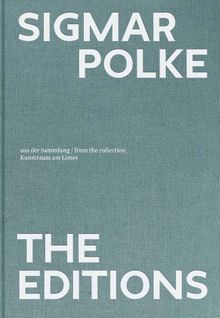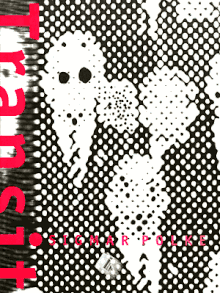| |||||||||||||||||||||||||||||||||
ARTIST MONOGRAPHS
|
|
STATUS: Out of print | 00/00/00 For assistance locating a copy, please see our list of recommended out of print specialists |
PUBLISHER
Marsilio Editori
BOOK FORMAT
Hardcover, 9.8 x 7.8 in. / 266 pgs / 152 color / 20 bw.
PUBLISHING STATUS
Pub Date 9/13/2016
Out of stock indefinitely
DISTRIBUTION
D.A.P. Exclusive
Catalog: Publisher Backlist
PRODUCT DETAILS
ISBN 9788831724074 TRADE
List Price: $55.00 CAD $70.00 GBP £45.00
AVAILABILITY
Not available
STATUS: Out of stock indefinitely. |
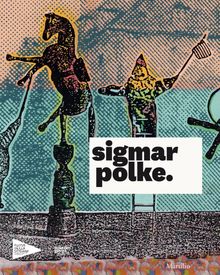 Sigmar Polke
Sigmar Polke
Published by Marsilio Editori.
Text by Elena Geuna, Guy Tosatto.
The artist who dared put into question the parameters of ordinary vision. One of the main exponents of Capitalist Realism–a current that arose in the 1970s in opposition to both the Socialist Realism widespread in the countries of Eastern Europe and Western pop art–Sigmar Polke was a tireless experimenter of techniques, art materials, and chemical-alchemical processes. He created figurative paintings that drew on a vast iconographic repertoire often inspired by everyday life and abstract works with a powerful symbolic value sometimes created by chance through reactions between paint and other products. The book reproduces over eighty-five of his works (including photographs and sculptures, along with numerous paintings), giving a full account of Polke's reflections and studies made over his fifty-year career.
PUBLISHER
Marsilio Editori
BOOK FORMAT
Paperback, 9.8 x 7.8 in. / 266 pgs / 152 color / 20 bw.
PUBLISHING STATUS
Pub Date 9/13/2016
Out of print
DISTRIBUTION
D.A.P. Exclusive
Catalog: Publisher Backlist
PRODUCT DETAILS
ISBN 9788831723794 TRADE
List Price: $55.00 CAD $70.00 GBP £50.00
AVAILABILITY
Not available
STATUS: Out of print | 00/00/00 For assistance locating a copy, please see our list of recommended out of print specialists |
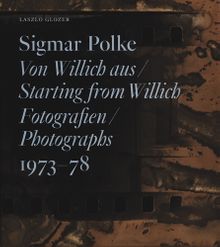 Sigmar Polke: Starting from Willich
Sigmar Polke: Starting from Willich
Photographs 1973-78
Published by Walther König, Köln.
Text by Laszlo Glozer.
PUBLISHER
Walther König, Köln
BOOK FORMAT
Clth, 9.5 x 10.5 in. / 144 pgs / 98 color / 7 bw.
PUBLISHING STATUS
Pub Date 9/29/2015
Out of stock indefinitely
DISTRIBUTION
D.A.P. Exclusive
Catalog: SPRING 2016 p. 136
PRODUCT DETAILS
ISBN 9783863357740 FLAT40
List Price: $39.95 CAD $53.95
AVAILABILITY
Not available
STATUS: Out of stock indefinitely. |
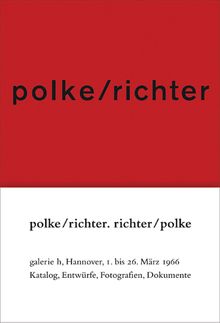 Polke/Richter: Richter/Polke
Polke/Richter: Richter/Polke
Published by Walther König, Köln.
Text by Sigmar Polke, Gerhard Richter. Foreword by Dietmar Elger.
PUBLISHER
Walther König, Köln
BOOK FORMAT
Paperback, 6 x 9 in. / 64 pgs / 55 color.
PUBLISHING STATUS
Pub Date 10/31/2014
Out of print
DISTRIBUTION
D.A.P. Exclusive
Catalog: SPRING 2015 p. 187
PRODUCT DETAILS
ISBN 9783863355586 FLAT40
List Price: $30.00 CAD $35.00
AVAILABILITY
Not available
STATUS: Out of print | 00/00/00 For assistance locating a copy, please see our list of recommended out of print specialists |
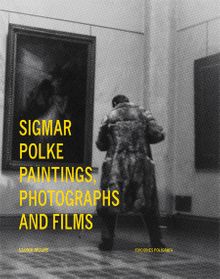 Sigmar Polke: Paintings, Photographs and Films
Sigmar Polke: Paintings, Photographs and Films
Published by Ediciones Polígrafa.
Edited by Gloria Moure.
PUBLISHER
Ediciones Polígrafa
BOOK FORMAT
Hardcover, 8.5 x 10.25 in. / 330 pgs / 180 color.
PUBLISHING STATUS
Pub Date 9/30/2014
Active
DISTRIBUTION
D.A.P. Exclusive
Catalog: FALL 2014 p. 125
PRODUCT DETAILS
ISBN 9788434313378 TRADE
List Price: $75.00 CAD $99.00
AVAILABILITY
In stock
in stock $75.00 Free Shipping UPS GROUND IN THE CONTINENTAL U.S. |
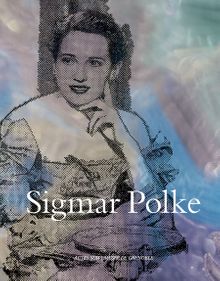 Sigmar Polke
Sigmar Polke
Published by Actes Sud/Musée de Grenoble.
Text by Guy Tossato, Bernard Marcadé.
PUBLISHER
Actes Sud/Musée de Grenoble
BOOK FORMAT
Hardcover, 8.75 x 11.25 in. / 192 pgs / 80 color.
PUBLISHING STATUS
Pub Date 4/30/2014
Out of print
DISTRIBUTION
D.A.P. Exclusive
Catalog: MID SUMMER 2014
PRODUCT DETAILS
ISBN 9782330023805 TRADE
List Price: $45.00 CAD $55.00
AVAILABILITY
Not available
STATUS: Out of print | 00/00/00 For assistance locating a copy, please see our list of recommended out of print specialists |
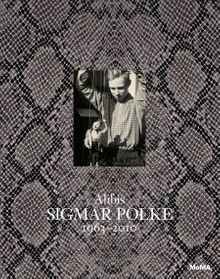 Sigmar Polke: Alibis 1963-2010
Sigmar Polke: Alibis 1963-2010
Published by The Museum of Modern Art, New York.
Edited by Kathy Halbreich, Mark Godfrey, Lanka Tattersall, and Magnus Schaefer. Text by Paul Chan, Christophe Cherix, Tacita Dean, Barbara Engelbach, Mark Godfrey, Stefan Gronert, Kathy Halbreich, Rachel Jans, John Kelsey, Jutta Koether, Christine Mehring, Matthias Muhling, Marcelle Polednik, Christian Rattemeyer, Kathrin Rottmann, Magnus Schaefer, and Lanka Tattersall. Bibliography by Erhard Klein. Interview with Benjamin H. D. Buchloh
Sigmar Polke (1941–2010) was born in Oels, in eastern Germany, now Olesnica in present-day Poland. At the end of World War II, Polke and his family fled to East Germany and, in 1953, escaped to Düsseldorf, where he was trained as a glass painter and subsequently studied at the Kunstakademie Düsseldorf. Since the late 1960s, Polke’s work has been shown widely, including solo exhibitions at European and American museums. His last major work was a commission for 12 stained glass windows of the Grossmünster in Zurich, Switzerland, completed in 2009.
Kathy Halbreich is Associate Director at The Museum of Modern Art.
Mark Godfrey is Senior Curator of International Art (Europe and Americas) at Tate Modern in London.
Lanka Tattersall is Assistant Curator at the Museum of Contemporary Art, Los Angeles.
Magnus Schaefer is a Curatorial Assistant in the Department of Drawings and Prints at The Museum of Modern Art, New York.
Paul Chan is an American artist, writer and founder of the art and ebook publishing company Badlands Unlimited, based in New York City.
Christophe Cherix is The Robert Lehman Foundation Chief Curator of Drawings and Prints at The Museum of Modern Art.
Tacita Dean is an English filmmaker and visual artist.
Barbara Engelbach is a curator at the Museum Ludwig, Cologne.
Stefan Gronert is a curator of the graphics collection at the Kunstmuseum and teaches art history at the University of Bonn, specializing in photography.
Rachel Jans is Assistant Curator at The San Francisco Museum of Modern Art.
PUBLISHER
The Museum of Modern Art, New York
BOOK FORMAT
Hardcover, 9.5 x 12 in. / 320 pgs / 520 color.
PUBLISHING STATUS
Pub Date 4/30/2014
Out of stock indefinitely
DISTRIBUTION
D.A.P. Exclusive
Catalog: SPRING 2014 p. 5
PRODUCT DETAILS
ISBN 9780870708893 TRADE
List Price: $75.00 CAD $99.00
AVAILABILITY
Not available
STATUS: Out of stock indefinitely. |
 Sigmar Polke: We Petty Bourgeois!
Sigmar Polke: We Petty Bourgeois!
Comrades and Contemporaries, The 1970s
Published by D.A.P./Walther König, Köln.
Edited by Petra Lange-Berndt, Dietmar Rübel.
Sigmar Polke (1941-2010) was born in Lower Silesia, and migrated to Germany with his family in 1945. From 1961 to 1967 he studied at the Düsseldorf Arts Academy under Joseph Beuys, during which time he founded the Capitalist Realism movement with Gerhard Richter and Konrad Fischer. In the 1970s Polke built a substantial oeuvre in photography, from his travels in Pakistan, Afghanistan, Brazil and America, before taking a position at the Academy of Fine Arts in Hamburg in 1977. He died in 2010 following a long battle with cancer.
PUBLISHER
D.A.P./Walther König, Köln
BOOK FORMAT
Hardcover, 8.75 x 10.75 in. / 512 pgs / 315 color.
PUBLISHING STATUS
Pub Date 10/31/2011
Out of print
DISTRIBUTION
D.A.P. Exclusive
Catalog: FALL 2011 p. 61
PRODUCT DETAILS
ISBN 9781935202615 TRADE
List Price: $75.00 CAD $90.00
AVAILABILITY
Not available
STATUS: Out of print | 00/00/00 For assistance locating a copy, please see our list of recommended out of print specialists |
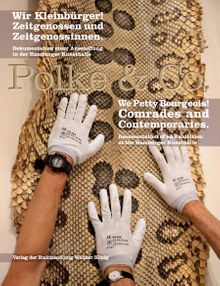 Polke & Co: We Petty Bourgeois
Polke & Co: We Petty Bourgeois
Comrades and Contemporaries
Published by Walther König, Köln.
Text by Petra Lange-Berndt, Dietmar Rübel.
PUBLISHER
Walther König, Köln
BOOK FORMAT
Paperback, 9.5 x 12 in. / 144 pgs / 220 color.
PUBLISHING STATUS
Pub Date 8/31/2010
Out of print
DISTRIBUTION
D.A.P. Exclusive
Catalog: FALL 2010 p. 163
PRODUCT DETAILS
ISBN 9783865607881 TRADE
List Price: $49.95 CAD $67.50
AVAILABILITY
Not available
STATUS: Out of print | 00/00/00 For assistance locating a copy, please see our list of recommended out of print specialists |
 Sigmar Polke: Windows for the Zürich Grossmünster
Sigmar Polke: Windows for the Zürich Grossmünster
Published by Parkett/Zurich Grossmunster.
Text by Marina Warner, Gottfried Boehm, Katharina Schmidt, Jacqueline Burckhardt, Bice Curiger, Ulrich Gerster, Regine Helbling, Käthi La Roche, Urs Rickenbach, Claude Lambert.
PUBLISHER
Parkett/Zurich Grossmunster
BOOK FORMAT
Hardcover, 8 x 11 in. / 208 pgs / 90 color.
PUBLISHING STATUS
Pub Date 11/30/2010
Out of stock indefinitely
DISTRIBUTION
D.A.P. Exclusive
Catalog: FALL 2010 p. 61
PRODUCT DETAILS
ISBN 9783907582275 TRADE
List Price: $65.00 CAD $87.00
AVAILABILITY
Not available
STATUS: Out of stock indefinitely. |
 Sigmar Polke: Axial Age Paintings
Sigmar Polke: Axial Age Paintings
Published by Walther König, Köln.
Text by Chrissie Iles.
PUBLISHER
Walther König, Köln
BOOK FORMAT
Clth, 15.25 x 10.5 in. / 252 pgs / 125 color.
PUBLISHING STATUS
Pub Date 2/1/2009
Out of print
DISTRIBUTION
D.A.P. Exclusive
Catalog: SPRING 2009 p. 137
PRODUCT DETAILS
ISBN 9783865604767 TRADE
List Price: $215.00 CAD $290.00
AVAILABILITY
Not available
STATUS: Out of print | 00/00/00 For assistance locating a copy, please see our list of recommended out of print specialists |
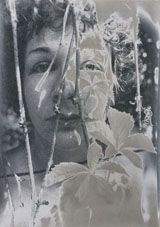 Sigmar Polke: Photographs 1969-1974
Sigmar Polke: Photographs 1969-1974
Published by nyehaus/foundation 20 21.
Edited by Tim Nye. Essay by Mariette Althaus.
PUBLISHER
nyehaus/foundation 20 21
BOOK FORMAT
Boxed, 9.75 x 12.5 in. / 73 pgs / 37 tritone.
PUBLISHING STATUS
Pub Date 2/1/2006
Out of print
DISTRIBUTION
D.A.P. Exclusive
Catalog: SPRING 2006 p. 83
PRODUCT DETAILS
ISBN 9781891027192 TRADE
List Price: $65.00 CAD $75.00
AVAILABILITY
Not available
STATUS: Out of print | 00/00/00 For assistance locating a copy, please see our list of recommended out of print specialists |
Sigmar Polke: Works & Days
Published by DuMont.
Edited by Bice Curiger. Essays by Hartmut Bàhme and Ulli Seegers.
PUBLISHER
DuMont
BOOK FORMAT
Hardcover, 9.5 x 12.5 in. / 220 pgs / 120 color / 20 bw.
PUBLISHING STATUS
Pub Date 8/15/2005
No longer our product
DISTRIBUTION
D.A.P. Exclusive
Catalog: FALL 2005 p. 120
PRODUCT DETAILS
ISBN 9783832175450 TRADE
List Price: $50.00 CAD $60.00
AVAILABILITY
Not available
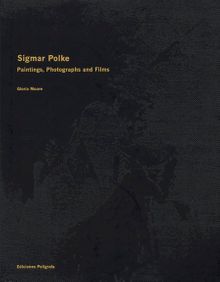 Sigmar Polke
Sigmar Polke
Paintings, Photographs, and Films
Published by Ediciones Polígrafa.
Edited by Gloria Moure.
PUBLISHER
Ediciones Polígrafa
BOOK FORMAT
Clothbound, 8.25 x 10.25 in. / 320 pgs / 218 color / 32 bw.
PUBLISHING STATUS
Pub Date 1/2/2003
Out of print
DISTRIBUTION
D.A.P. Exclusive
Catalog: FALL 2002 p. 61
PRODUCT DETAILS
ISBN 9788434309890 TRADE
List Price: $75.00 CAD $90.00
AVAILABILITY
Not available
STATUS: Out of print | 11/30/2012 For assistance locating a copy, please see our list of recommended out of print specialists |
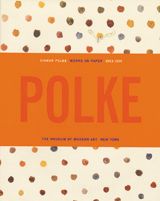 Sigmar Polke: Works On Paper
Sigmar Polke: Works On Paper
Published by The Museum of Modern Art, New York.
Edited by Margit Rowell. Essays by Bice Curiger, Michael Semff and Margit Rowell.
PUBLISHER
The Museum of Modern Art, New York
BOOK FORMAT
Paperback, 8.25 x 10.75 in. / 200 pgs / 299 color / 27 bw.
PUBLISHING STATUS
Pub Date 7/2/2002
Out of print
DISTRIBUTION
D.A.P. Exclusive
Catalog: FALL 2002
PRODUCT DETAILS
ISBN 9780870700835 TRADE
List Price: $24.95 CAD $27.50
AVAILABILITY
Not available
STATUS: Out of print | 5/11/2007 For assistance locating a copy, please see our list of recommended out of print specialists |
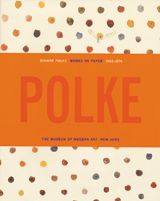 Sigmar Polke: Works On Paper
Sigmar Polke: Works On Paper
Published by The Museum of Modern Art, New York.
Edited by Margit Rowell. Essays by Bice Curiger, Michael Semff and Margit Rowell.
PUBLISHER
The Museum of Modern Art, New York
BOOK FORMAT
Hardcover, 8.25 x 10.5 in. / 200 pgs / 299 color / 27 bw.
PUBLISHING STATUS
Pub Date 7/2/2002
Out of print
DISTRIBUTION
D.A.P. Exclusive
Catalog: FALL 2002
PRODUCT DETAILS
ISBN 9780870700828 TRADE
List Price: $50.00 CAD $60.00
AVAILABILITY
Not available
STATUS: Out of print | 5/11/2007 For assistance locating a copy, please see our list of recommended out of print specialists |
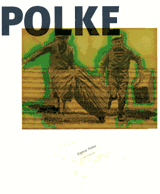 Sigmar Polke: Alchemist
Sigmar Polke: Alchemist
Published by Louisiana Museum of Modern Art.
Essays by Jutta Nestegard, Jon-Ove Steihaug and Poul Erik Tojner.
PUBLISHER
Louisiana Museum of Modern Art
BOOK FORMAT
Hardcover, 8.75 x 10.25 in. / 88 pgs / 58 color / 10 bw / 10 duotone.
PUBLISHING STATUS
Pub Date 11/2/2001
Out of print
DISTRIBUTION
D.A.P. Exclusive
Catalog: FALL 2001
PRODUCT DETAILS
ISBN 9788790029531 TRADE
List Price: $29.95 CAD $39.95 GBP £25.99
AVAILABILITY
Not available
STATUS: Out of print | 00/00/00 For assistance locating a copy, please see our list of recommended out of print specialists |
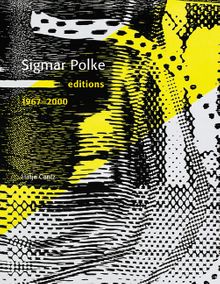 Sigmar Polke
Sigmar Polke
Editions 1967-2000
Published by Hatje Cantz.
Artwork by Sigmar Polke. Edited by Claus von der Osten, Martin Hentschel. Text by Jurgen Becker.
PUBLISHER
Hatje Cantz
BOOK FORMAT
Hardcover, 9.25 x 12 in. / 416 pgs / 205 color / 205 bw
PUBLISHING STATUS
Pub Date 10/2/2000
Out of print
DISTRIBUTION
D.A.P. Exclusive
Catalog: FALL 2000
PRODUCT DETAILS
ISBN 9783775709576 TRADE
List Price: $39.95 CAD $50.00
AVAILABILITY
Not available
STATUS: Out of print | 12/19/2005 For assistance locating a copy, please see our list of recommended out of print specialists |
PUBLISHER
Cantz
BOOK FORMAT
Paperback, 8.25 x 11 in. / 140 pgs / 30 color / 110 bw
PUBLISHING STATUS
Pub Date 4/2/1997
Out of print
DISTRIBUTION
D.A.P. Exclusive
Catalog: SPRING 1997
PRODUCT DETAILS
ISBN 9783893228942 TRADE
List Price: $35.00 CAD $40.00
AVAILABILITY
Not available
STATUS: Out of print | 4/22/2000 For assistance locating a copy, please see our list of recommended out of print specialists |
 Sigmar Polke: The Three Lies Of Painting
Sigmar Polke: The Three Lies Of Painting
Published by Cantz.
Artwork by Sigmar Polke. Contributions by Rudi Fuchs, Rudi Fuchs, Charles Haxthausen. Text by Hans Belting.
PUBLISHER
Cantz
BOOK FORMAT
Hardcover, 10 x 11.25 in. / 360 pgs / 230 color / 60 bw
PUBLISHING STATUS
Pub Date 10/2/1997
Out of print
DISTRIBUTION
D.A.P. Exclusive
Catalog: FALL 1997
PRODUCT DETAILS
ISBN 9783893229253 TRADE
List Price: $75.00 CAD $90.00
AVAILABILITY
Not available
STATUS: Out of print | 4/24/2004 For assistance locating a copy, please see our list of recommended out of print specialists |
Sigmar Polke: Photoworks
When Pictures Vanish
Published by Scalo Publishers/Museum of Contemporary Art, Los Angeles.
Artwork by Sigmar Polke. Edited by Paul Schimmel. Text by Maria Hamburg Kennedy.
PUBLISHER
Scalo Publishers/Museum of Contemporary Art, Los Angeles
BOOK FORMAT
Hardcover, 10.25 X 11 in. / 256 pgs / 263 color / 34 bw
PUBLISHING STATUS
Pub Date 2/2/1996
Out of print
DISTRIBUTION
D.A.P. Exclusive
Catalog: SPRING 1996
PRODUCT DETAILS
ISBN 9781881616658 TRADE
List Price: $85.00 CAD $100.00
AVAILABILITY
Not available
STATUS: Out of print | 8/15/2005 For assistance locating a copy, please see our list of recommended out of print specialists |
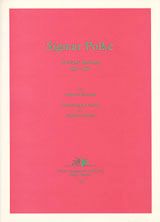 Sigmar Polke: The Early Drawings, 1963-1969
Sigmar Polke: The Early Drawings, 1963-1969
Published by Gachnang & Springer.
Artwork by Sigmar Polke.
PUBLISHER
Gachnang & Springer
BOOK FORMAT
Paperback, 9 x 13 / 106 pgs / 100 color
PUBLISHING STATUS
Pub Date 9/2/1991
No longer our product
DISTRIBUTION
D.A.P. Exclusive
Catalog: FALL 1991
PRODUCT DETAILS
ISBN 9783906127279 TRADE
List Price: $65.00 CAD $75.00
AVAILABILITY
Not available
PUBLISHER
Gachnang & Springer
BOOK FORMAT
Hardcover, 9 x 13 / 216 pgs / 100 color
PUBLISHING STATUS
Pub Date 1/2/1987
No longer our product
DISTRIBUTION
D.A.P. Exclusive
Catalog: UNKNOWN 1990
PRODUCT DETAILS
ISBN 9783906127026 TRADE
List Price: $175.00 CAD $210.00
AVAILABILITY
